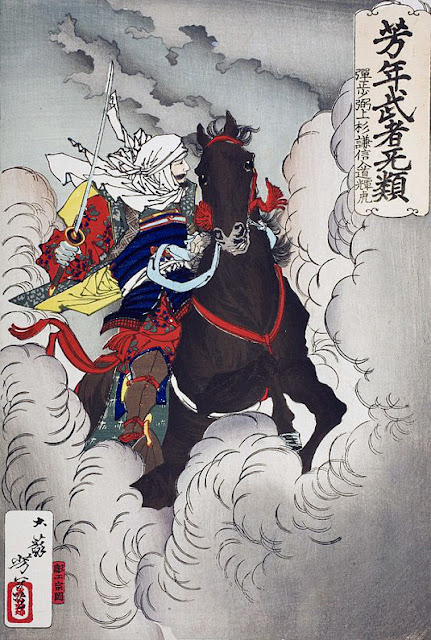Masanobu: Murasaki Shikibu
Okumura Masanobu (1686-1764) was one of the earliest ukiyo-e masters. He experimented with style, motive, perspective, format, and technique. Posterity has not given him the attention he deserves. His works definitely influenced subsequent ukiyo-e.
This print is: Murasaki Shikibu, from the series Ukiyo-e Genji, created about 1710.
Murasaki Shikibu was a lady of nobility. She wrote what is often considered the world's first novel, The Tale of Genji [源氏物語, Genji Monogatari], written sometime between 1000 and 1012 AD.
This print is: Murasaki Shikibu, from the series Ukiyo-e Genji, created about 1710.
Murasaki Shikibu was a lady of nobility. She wrote what is often considered the world's first novel, The Tale of Genji [源氏物語, Genji Monogatari], written sometime between 1000 and 1012 AD.






